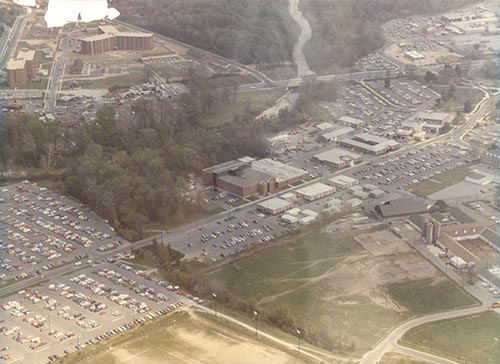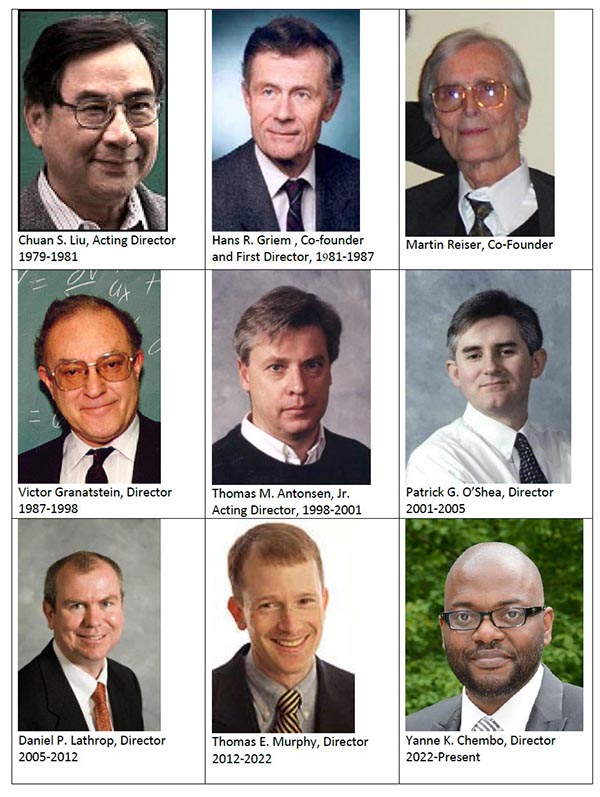The History of IREAP - 2023
Mission
The Institute for Research in Electronics and Applied Physics (IREAP) is a joint institute of the College of Computer, Mathematical, and Natural Sciences and the A. James Clark School of Engineering. The mission of IREAP is to advance modern science through research and educational programs that are interdisciplinary between physical science and engineering. The flow of knowledge between basic science and engineering at IREAP is bidirectional: applying basic science skills to problems of practical importance and engineering skills to aid in fundamental scientific investigations, with an emphasis on diversity, quality, and excellence. IREAP is recognized internationally as a leading university research center and conducts experimental and theoretical research in many areas; such as, high-temperature plasma physics, plasma spectroscopy, microwave electronics, high-brightness charged particle beams, laser-plasma interactions, nonlinear dynamics, biophysics, ion beam microfabrication techniques, nonlinear and quantum optics, quantum information, nanoscience, and nanotechnology.
Members
Currently (2023) IREAP has 25 faculty members from the Departments of Physics, Electrical and Computer Engineering, Mathematics, Materials Science and Engineering, Geology, the Joint Quantum Institute, UMD Radiation Facilities, and the Institute for Physical Science and Technology who participate in IREAP research. Additionally, IREAP supports 8 research scientists, 10 postdoctoral researchers, and is home to 5 emeritus faculty members and 6 visiting scientists. At present, 81 graduate students work on their research dissertation projects with members of the IREAP faculty, and since its founding, IREAP has produced over 481 Ph.D. graduates. The research activity is reinforced and broadened by 5 visiting scientists and supported by an energetic and competent staff of 11, who provide both administrative and technical support to the research efforts.
Founding
The Institute was first formed in 1979 as the Laboratory for Plasma and Fusion Energy Studies by merging the Plasma Physics Group led by Prof. Hans Griem and the Charged Particle Beam Group led by Prof. Martin Reiser (died May 1, 2011). The Plasma Physics Group, under the Dean of Computer, Mathematics, and Physical Sciences (CMPS), was housed in the Space Sciences Building. The administrative offices were on the third floor and the laboratories were in the basement. The Machine Shop and other laboratories were in the one-story Heavy Research Building in what-was-then a far corner of campus. Professor Reiser's Charged Particle Beam Group, part of the School of Engineering, was housed in a quanset hut near the Glenn L. Martin Engineering Building. In 1979 construction began on a two-story addition to the Heavy Energy Building. Upon its completion in 1981 the building was occupied by both groups and the building was renamed the Energy Research Facility. In the 1990s the laboratories in the 0300 wing were added to the north side of the building. The Institute subsequently evolved through the years from its initial focus on plasma physics, fusion, and charged particle beam research, to four main areas of research: plasma, accelerator and nuclear physics; complex and emergent systems; advanced materials and nanotechnology; and nonlinear and quantum photonics.
 Energy Research Facility in the center of the picture -- 1981
Energy Research Facility in the center of the picture -- 1981
The name of the Institute has changed over time. In 1979 it was initially called the Laboratory for Plasma and Fusion Energy Studies. Effective July 1, 1988, it was named the Laboratory for Plasma Research and later the Institute for Plasma Research. Effective July 1, 2001, it was renamed the Institute for Research in Electronics and Applied Physics (IREAP).
Leadership

The Institute is led by a Director who reports to the Deans of the two college of which IREAP is a part. The first acting director of the Institute was Professor Chuan Liu of the Department of Physics, who presided over the groundbreaking of the Energy Research Building on July 19, 1979, which currently houses IREAP. He was responsible for establishing the Plasma Theory Group. Liu subsequently went on to become Dean of the Graduate School at UMD and President of National Central University in Taiwan. He returned to the University of Maryland in 2007 where he is now an emeritus professor.
In 1981 Hans Griem, also of the Physics Department and a founding member of the Institute, was appointed as the first permanent director. Griem had joined the University in 1957 and was an emeritus professor and member of IREAP. He passed away October 2, 2019.
Griem was succeeded in 1987 by Professor Victor Granatstein of the Department of Electrical and Computer Engineering. Granatstein, at that time a recent arrival from the Naval Research Laboratory, expanded the Institute’s activities in high power microwave electronics. He is currently an emeritus professor in IREAP.
In 1998 Professor Thomas Antonsen, with joint appointments in Physics and Electrical and Computer Engineering, was named acting director. Antonsen joined the University in 1980 and is a current member of IREAP and Distinguished University Professor (IREAP has four). Antonsen was replaced in 2001 by Professor Patrick O’Shea of the Department of Electrical and Computer Engineering.
O’Shea arrived in 1998 from Duke University, after receiving his Ph.D. degree in 1985 from the Institute for Plasma Research at UMD under the guidance of Professors Martin Reiser and William Destler. Professor Reiser was a founding father of the Institute. O’Shea stepped down in 2005 to become Chair of the Department of Electrical and Computer Engineering here at Maryland in the Clark School. He subsequently became Dean of the Graduate School and Vice President for Research at Maryland. He returned to Ireland to become president of his alma mater, University College Cork in Ireland. He returned to the University of Maryland in 2021, and presently works in the IREAP.
O’Shea was succeeded by Professor Daniel Lathrop who has appointments in the Physics and Geology departments. Lathrop came to the University in 1997 as part of an initiative to expand the activities in nonlinear dynamics. Lathrop stepped down in 2012 to become Associate Dean in CMNS.
He was succeeded by Professor Thomas Murphy (2012-2022) of the Department of Electrical and Computer Engineering. Professor Murphy is an expert in nonlinear optical science.
In 2022 Professor Yanne Chembo became our current Director. He joined the University of Maryland in January 2019 with a joint appointment in the Department of Electrical and Computer Engineering and the Institute for Research in Electronnics and Applied Physics. Prior to joining the University of Maryland, he was a Research Director at the French National Center for Scientific Research (CNRS). There, he led a research group focused on the exploration of nonlinear, quantum and stochastic phenomena in optoelectronics, microwave photonics, and laser physics.
Top